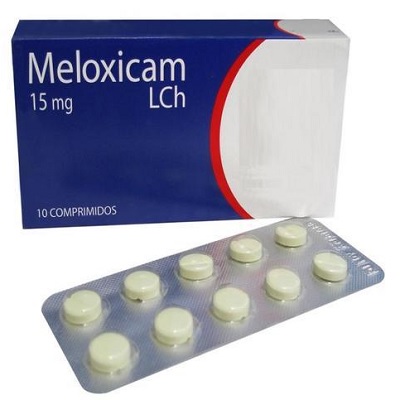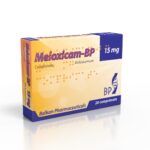Should I Take Meloxicam at Night or In The Morning?

Meloxicam is in a class of medications called nonsteroidal anti-inflammatory drugs (NSAIDs). It works by stopping the body’s production of a substance that causes pain, fever, and inflammation.
Meloxicam is used to relieve pain, tenderness, swelling, and stiffness caused by osteoarthritis (arthritis caused by a breakdown of the lining of the joints) and rheumatoid arthritis (arthritis caused by swelling of the lining of the joints). Meloxicam is also used to relieve the pain, tenderness, swelling, and stiffness caused by juvenile rheumatoid arthritis (a type of arthritis that affects children) in children 2 years of age and older.
How should meloxicam be used?
Meloxicam comes as a tablet and suspension (liquid) to take by mouth. It is usually taken once a day with or without food. Take meloxicam at the same time every day. Follow the directions on your prescription label carefully, and ask your doctor or pharmacist to explain any part you do not understand.
Rheumatoid arthritis: The usual starting dose of meloxicam to treat the symptoms of rheumatoid arthritis is 15 mg once daily. For some people who may respond well to the medication, their doctor can reduce the dose to 7.5 mg once daily, according to need.
Osteoarthritis: The recommended dose to relieve osteoarthritis pain is 7.5 mg once daily. The doctor may increase this to 15 mg taken once daily if necessary.
For both conditions, the maximum dose of meloxicam is 15 mg taken once daily. This medication may be taken with or without food.
The use of this medication should be limited to the lowest effective dose for the shortest period of time needed.
Many things can affect the dose of medication that a person needs, such as body weight, other medical conditions, and other medications. If your doctor has recommended a dose different from the ones listed here, do not change the way that you are taking the medication without consulting your doctor.
It is important to take this medication exactly as prescribed by your doctor. If you miss a dose, skip the missed dose and continue with your regular dosing schedule. Do not take a double dose to make up for a missed one. If you are not sure what to do after missing a dose, contact your doctor or pharmacist for advice.
Should I take meloxicam at night or in the morning?
According to a new study, published in the journal Scientific Reports, using NSAIDs like meloxicam during the daytime might be preferable to taking them at night (such as before bed). Meloxicam can take up to two weeks to start working in full effect. Some changes to pain, swelling, tenderness, or stiffness may be noticeable within 24 to 72 hours, but it might take longer to notice a large difference in pain levels.
Do not lie down for at least 10 minutes after taking this drug. If you are taking the liquid form of this medication, shake the bottle gently before each dose.
What side effects are possible with this medication?
The following side effects have been reported by at least 1% of people taking meloxicam. Many of these side effects can be managed, and some may go away on their own over time.
Contact your doctor if you experience these side effects and they are severe or bothersome. Your pharmacist may be able to advise you on managing side effects.
o constipation
o diarrhea
o dizziness or lightheadedness
o drowsiness
o flushing
o gas/flatulence
o headache
o indigestion
o mouth ulcers
o nausea
o sensitivity to sunlight
o sleepiness
o sore mouth
o uncomfortable feeling in the stomach
o weight changes
Although most of these side effects listed below don’t happen very often, they could lead to serious problems if you do not seek medical attention.
Check with your doctor as soon as possible if any of the following side effects occur:
o confusion
o eye infection (e.g., swollen runny eyes, itching eyes, crusty eyelids)
o hearing problems
o high blood pressure
o pain while urinating or difficulty urinating
o pounding heart beat
o ringing in the ears
o signs of anemia (low red blood cells; e.g., dizziness, pale skin, unusual tiredness or weakness, shortness of breath)
o signs of clotting problems (e.g., unusual nosebleeds, bruising, blood in urine, coughing blood, bleeding gums, cuts that don’t stop bleeding)
o signs of depression (e.g., poor concentration, changes in weight, changes in sleep, decreased interest in activities, thoughts of suicide)
o signs of infection (symptoms may include fever or chills, severe diarrhea, shortness of breath, prolonged dizziness, headache, stiff neck, weight loss, or listlessness)
o signs of kidney problems (e.g., increased urination at night, decreased urine production, blood in the urine, painful or difficult urination)
o signs of liver damage (e.g., yellow skin or eyes, abdominal pain, dark urine, clay-coloured stools, loss of appetite, nausea and vomiting, or itching)
o skin rash or itching
o small, red spots on skin
o swelling of the lower legs, ankles, or feet
o unexplained weight gain
o vision changes including blurred vision
o vomiting or persistent nausea, indigestion, stomach pain, or diarrhea
Stop taking the medication and seek immediate medical attention if any of the following occur:
o changes in the amount or colour of urine (such as red or brown urine)
o fainting
o rapid swelling of face, tongue, lips
o seizures
o severe stomach pain
o shortness of breath
o signs of bleeding in the stomach (e.g., bloody, black, or tarry stools, spitting up of blood, vomiting blood or material that looks like coffee grounds)
o signs of breathing problems (e.g., shortness of breath, troubled breathing, wheezing, or tightness in chest, fast or irregular breathing)
o signs of meningitis not caused by infection (e.g., headache (severe), throbbing, or with stiff neck or back)
o signs of a severe allergic reaction (e.g., hives, difficulty breathing, swelling of the face, mouth, throat, or tongue)
o signs of a severe skin reaction (e.g., blistering, peeling, a rash covering a large area of the body, a rash that spreads quickly, or a rash combined with fever or discomfort)
Some people may experience side effects other than those listed. Check with your doctor if you notice any symptom that worries you while you are taking this medication.
You may find useful information on What Happens If I Take 2 Meloxicam?





